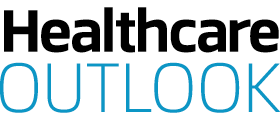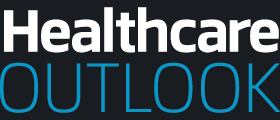Evolving the boundaries of patient care, CEO and co-Founder of Tachmed, Paul Christie, highlights the company’s transformative technological advances to create at-home diagnoses, making healthcare more affordable and accessible.
The last five years have seen an intense uptake in the utilization of telehealth across the world. The US, in particular, has greatly embraced the benefits of digital healthcare and the many aspects of virtual primary care services that telehealth encompasses.
Yet despite this turning point, the healthcare system in North America still struggles to provide universal access to health services due to the effects of the COVID-19 pandemic and the state of the industry.
However, the US’ saving grace is the country’s world-class university research and the work of university tech offices, which aid in the accessible commercialization of healthcare through industry partnerships. A key example of this is the Veterans Association of America, which has produced instrumental quantitative and qualitative studies to aid accessibility.
“There is so much work to do when it comes to balancing the clear positive impact of easier access to healthcare with the quality of remote diagnosis and treatment,” opens CEO and co-Founder of Tachmed, Paul Christie.
“Therefore, greater deployment of innovative diagnostics at home and in the field, combined with integrated patient treatment and digital care management pathways, will considerably boost positive ratings amongst users of telehealth systems,” he adds.
ACCESSIBILITY AND AFFORDABILITY
As frontrunners in the North American telehealth sector, Tachmed is developing a simple-to-use, digital diagnostic system based on innovative health tech, which will allow people to self-test their conditions from the comfort of their own homes and negate the need for a doctor’s appointment. This brings a new lease of life and versatility to the diagnosis of chronic and contagious diseases.
“With big plans for growth, we believe having a system with cost-effective, easy-to-use devices will massively transform how people access and use healthcare, as well as changing attitudes towards home testing,” Christie highlights.
The device will not only support struggling health systems by reducing waiting lists for test results, but it will also revolutionize the operational workflows for clinicians across primary care services.
Furthermore, it will mean that people in remote locations will be able to access health digitally, where clinics are hard to reach.
Once a test has been carried out by an individual, the Tachmed device instantly delivers accurate data to a healthcare practitioner who immediately has the information they need to diagnose or prescribe medication.
“This means that there is no need for patients to wait weeks or even months for test results, allowing access to treatment much faster. Additionally, clinicians can utilize the diagnostic device in their own clinics to expedite healthcare screening,” explains Christie.
The Tachmed device can also have a monumental positive impact in disaster zones, enabling the ability to test and diagnose people for minor conditions when hospitals are overwhelmed.
“It’s in these situations where we tend to see outbreaks of deadly diseases occurring, as people struggle to get access to clean water and sanitation, so quickly identifying those infected via regular testing could help prevent the situation from spiraling out of control,” he adds.
DIGITAL INNOVATION
In the aftermath of the COVID-19 pandemic, home-testing devices have dominated the healthcare market, each using different methods of testing. Alongside the pandemic and other respiratory conditions, there are also test kits for diabetes and even testing for bowel cancer.
However, Tachmed goes one step further and is revolutionary in the sense that the test results for a specific condition can be retrieved almost instantly, with the results also shared securely with relevant clinicians. Therefore, should the patient require a prescription, the entire process is quicker and more streamlined.
For example, the company is currently developing an app to work alongside the Tachmed device, named TachHub, which will be a multi-user app linked to third-party platforms such as electronic health record management systems. This can be fully optimized alongside the TachWorks app as an engine for sharing real-time health analytics.
Therefore, Tachmed’s innovations address a gap in the market for diagnostic devices that are a fast-acting connection between professionals and patients.
“Tachmed’s new system provides a reliable entry point to the new digital health ecosystem and offers frontline capability in real time by processing the patient’s health data,” Christie shares.
To achieve this, Tachmed needed to create a brand-new toolbox of digital diagnostic devices which, once approved by the Food and Drug Administration (FDA), will produce precise data for downstream patient management.
GOING GLOBAL
Tachmed currently has an established commercial presence in New York City, but the business wants to go one step further by cementing plans to establish significant service, production, and R&D in the US as part of its next phase of growth.
Following an initial roll-out across the continent, Tachmed hopes to expand its global presence to Canada, the UK, and beyond.
“The Tachmed device will be launched in the US in spring 2024 before it is rolled out in the UK, so next year is a really exciting time for us.
“Our ambition is to introduce the device across more countries and see the impact it will have worldwide.”
The Tachmed device is positioned at the forefront of MedTech innovation and will significantly contribute to a modern primary health service fit for the 21st century.
THE FOUNDING OF TACHMED
It was whilst working in Africa in 2010 as an investment banker that Christie noticed there was a shortage of doctors who were able to reach remote populations. Despite being able to speak to patients, clinicians were unable to effectively diagnose their conditions.
“I quickly realized that mobile technology could have a huge impact, connecting clinicians with communities much faster and quicker than at present. That’s when the idea for Tachmed was born.”
Subsequently, in 2018, Christie partnered with Lord Maxwell Beaverbrook, a seasoned entrepreneur in telecommunications, technology, and healthcare businesses to bring the idea for Tachmed to life.
“I truly believe that a digital device, like the one we are developing, could make healthcare more accessible to everyone through at-home testing, as well as bridging the gap in the digital health ecosystem.
“It will transform the next generation of mobile or remote health services and prove that the possibilities of digital technology are truly endless.”























